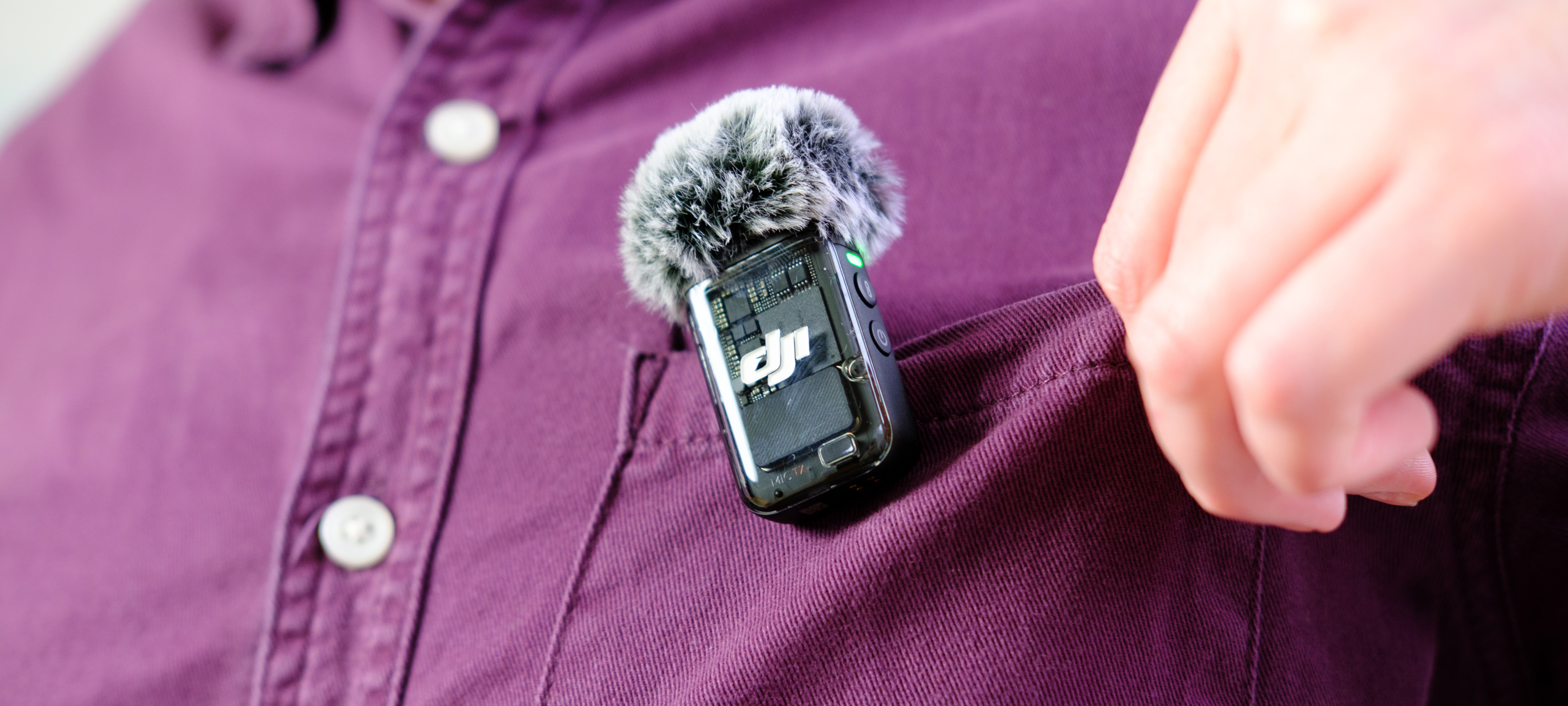
Price: $349/£309 (2TX + RX)
Wireless: Yes
Smartphone connectivity: Yes
Wireless range: 820ft (250m)
AOP: 120dB SPL
Noise cancellation: Yes
Internal recording: Yes
Touch screen: Yes (RX)
Size: 1.8 x 1.2 x 0.9 inches (TX)
Weight: 28g (each TX/RX)
Battery life: 6 hours (18 hours w/ case)
The DJI Mic 2 is a premium wireless microphone system and follow up to the original DJI Mic. However, the Mic 2 isn’t merely a successor in name only — Chinese manufacturer DJI has built in a variety of new and upgraded technology to make the Mic 2 a more compelling product than its older sibling, and help it compete with similarly priced rivals in the premium wireless market, namely the Rode Wireless Pro.
New and upgraded technology in the DJI Mic 2 includes AI noise cancellation to help clean up vocals in complex noise environments, higher quality audio capture, plus direct bluetooth connection which enables the Mic 2 transmitter (TX) to connect wirelessly to smartphones and DJI devices without the need of the receiver (RX).
With a strong emphasis on vocal clarity, the Mic 2 is aimed primarily at content creators who want higher quality audio, but it comes with enough high-end features to satisfy more demanding users, too.
So can the DJI Mic 2 earn a place among the best wireless microphone systems around? Find out in our full DJI Mic 2 review.
DJI Mic 2 review: Price & availability
The DJI Mic 2 was announced in January 2024, although the Mic 2 single transmitter has been available indirectly since late 2023 as part of the DJI Osmo Pocket 3 Creator Combo.
The full DJI Mic 2 bundle (2TX + RX) tested costs $349 / £309. This includes two transmitters, a receiver, a TRS audio cable, a charging case, two windscreens (A.K.A “deadcats”), USB-C and Lightning adapters (replacing a TRRS cable for smartphone connection), a USB-C to USB-A cable, and a carrying case. This undercuts the equivalent 2TX + RX bundle of the Rode Wireless Pro by around $50.
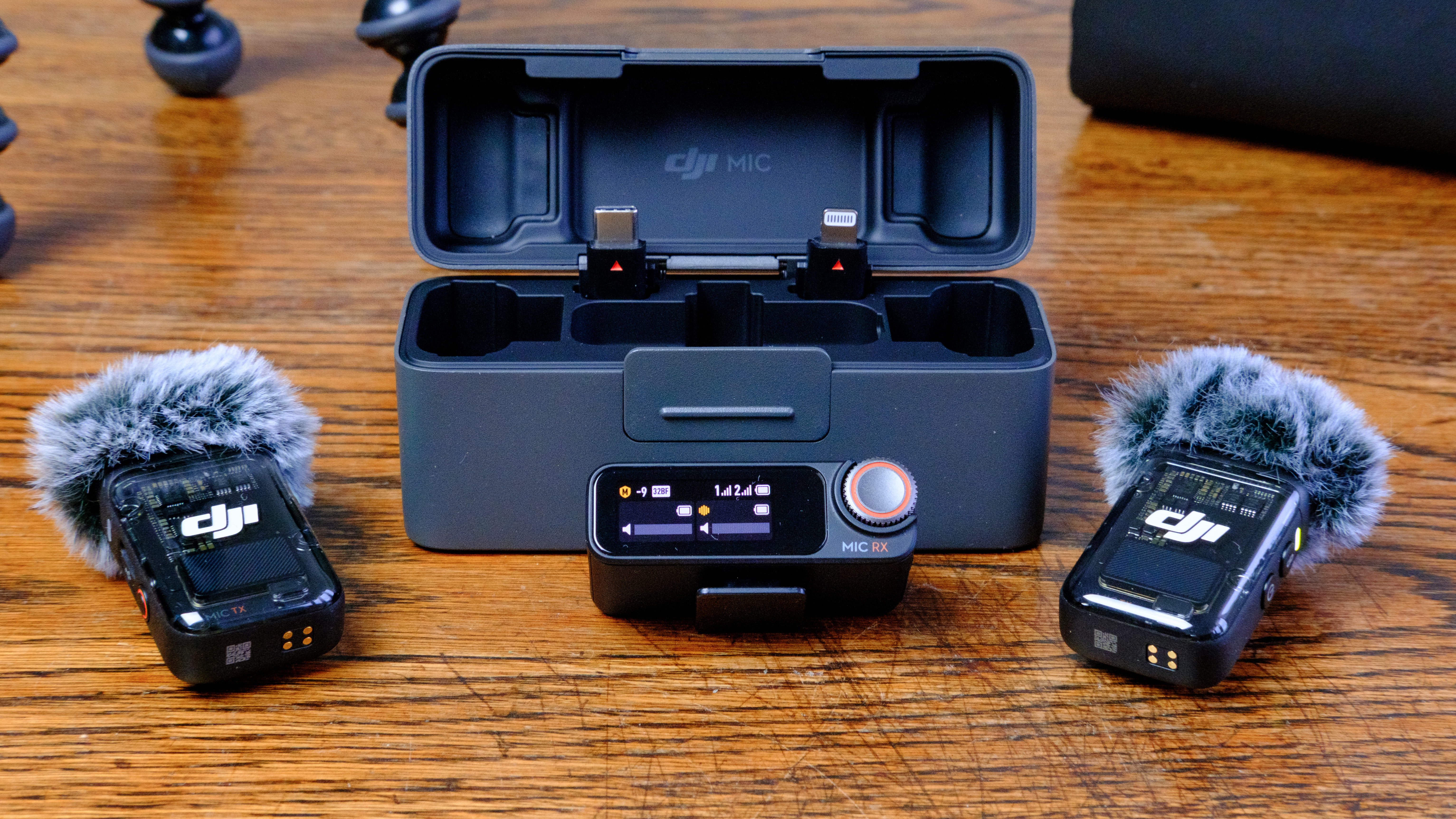
Also available is a single TX + RX bundle for $219 / £189, while standalone TX units can be purchased for $99 / £89. This modular approach means prospective buyers can scale costs to their needs.
DJI Mic 2 review: Design & controls
The DJI Mic 2 looks very similar to the original DJI Mic, although the opaque ridged finish of the earlier transmitters has gone in favor of a see-through design exposing the internal PCB and chip architecture, which looks awesome (but is a fingerprint magnet). Each transmitter features a clip and strong magnet allowing two ways of securing it to clothing. There are power, pair and record buttons, with accompanying lights to notify the user of charge, connection and recording. TX settings are tweaked using the RX.
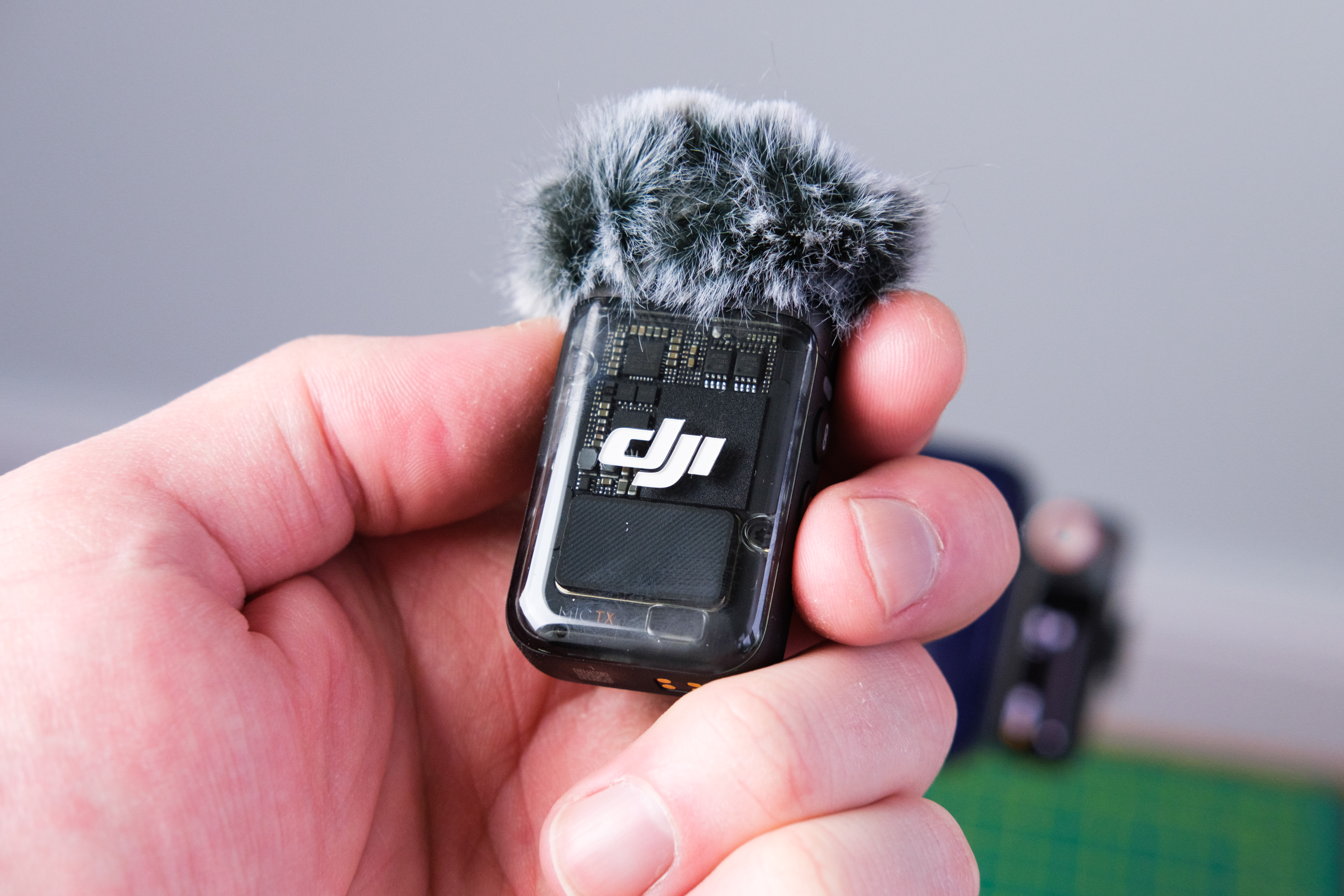
The Mic 2’s RX unit has also lost the ridges of the former model, this time replaced by a simple black finish. Like the original, the Mic 2’s receiver features a small OLED touchscreen which is bright and colorful, albeit a little tricky to use if you have larger fingers given its size. To help with that, there’s a new orange scroll and click wheel, which makes navigating the tiny screen a little easier. It’s still a little fiddly though, especially when I was testing the unit outside with cold hands or in motorcycle gloves. The RX unit features a standard shoe mount on its base for mounting.
The DJI Mic 2 is built to last.
The charging case of the 2TX + RX bundle (case also available standalone for $69 / £59) has again lost its black, ridged finish and rounded edges, this time finished in gunmetal with a square design. It looks great, and it’s nice and weighty thanks to the metal plating; the case even closes with a satisfying click. All three TX/RX slots are magnetic, so each unit slots in with an equally pleasing thunk. On the base are two rubber feet to stop the case from sliding around, while the back features a USB-C port for charging.
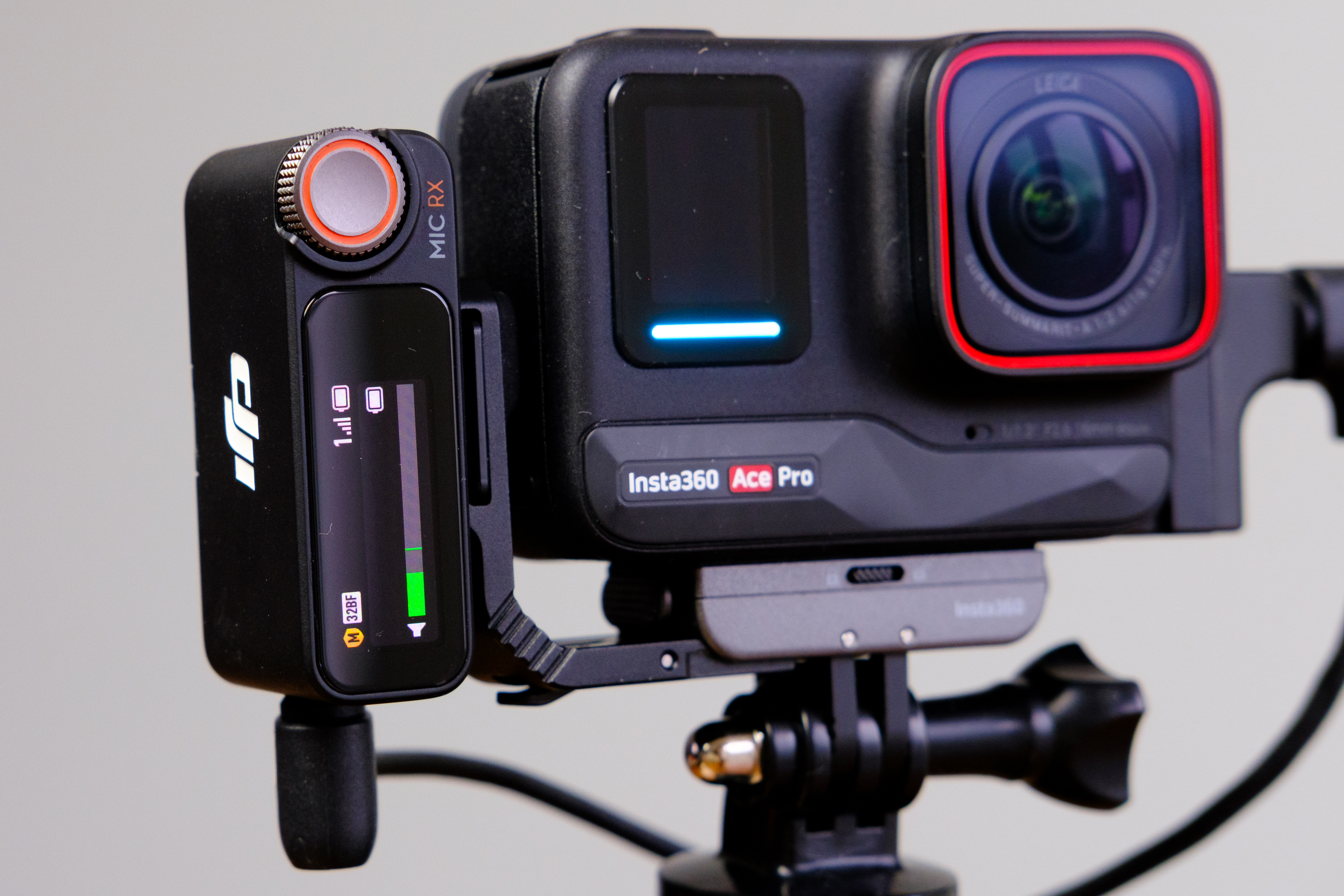
As I’ve come to expect from DJI products, build quality is impeccable. Everything feels solid and premium, even the see-through plastic on the TX units manages to avoid feeling cheap. The DJI Mic 2 is built to last.
Each individual TX and the RX weigh 28g and measure just 1.8 x 1.2 x 0.9 inches, making them extremely small and lightweight, and subsequently easy to clip onto lapels without causing sagging or getting in the way.

Personally, I find the Mic 2's sleeker TX design less intrusive than the large square design of the Rode Wireless line, which I think sticks out when positioned on the lapel in video content. The Mic 2’s magnet allows the TX to be positioned and held in place under clothing, again making it less intrusive.
DJI Mic 2: Connectivity & recording features
The DJI Mic 2 features direct Bluetooth connectivity, meaning the TX units can be used as standalone mics without a receiver. In terms of cameras, only the DJI Osmo Action 4 and the DJI Osmo Pocket 3 support direct bluetooth connectivity. However, direct Bluetooth connectivity also works with smartphones, which will be handy for livestreamers, vloggers or social media creators shooting with their phones.
Included with the 2TX + RX bundle are Lightning and USB-C adapters for direct wired smartphone connectivity, removing the need for a TRRS cable. These clip handily into a modular port on the RX unit. The USB-C adapter can also be used to hook the system up to a computer via USB.
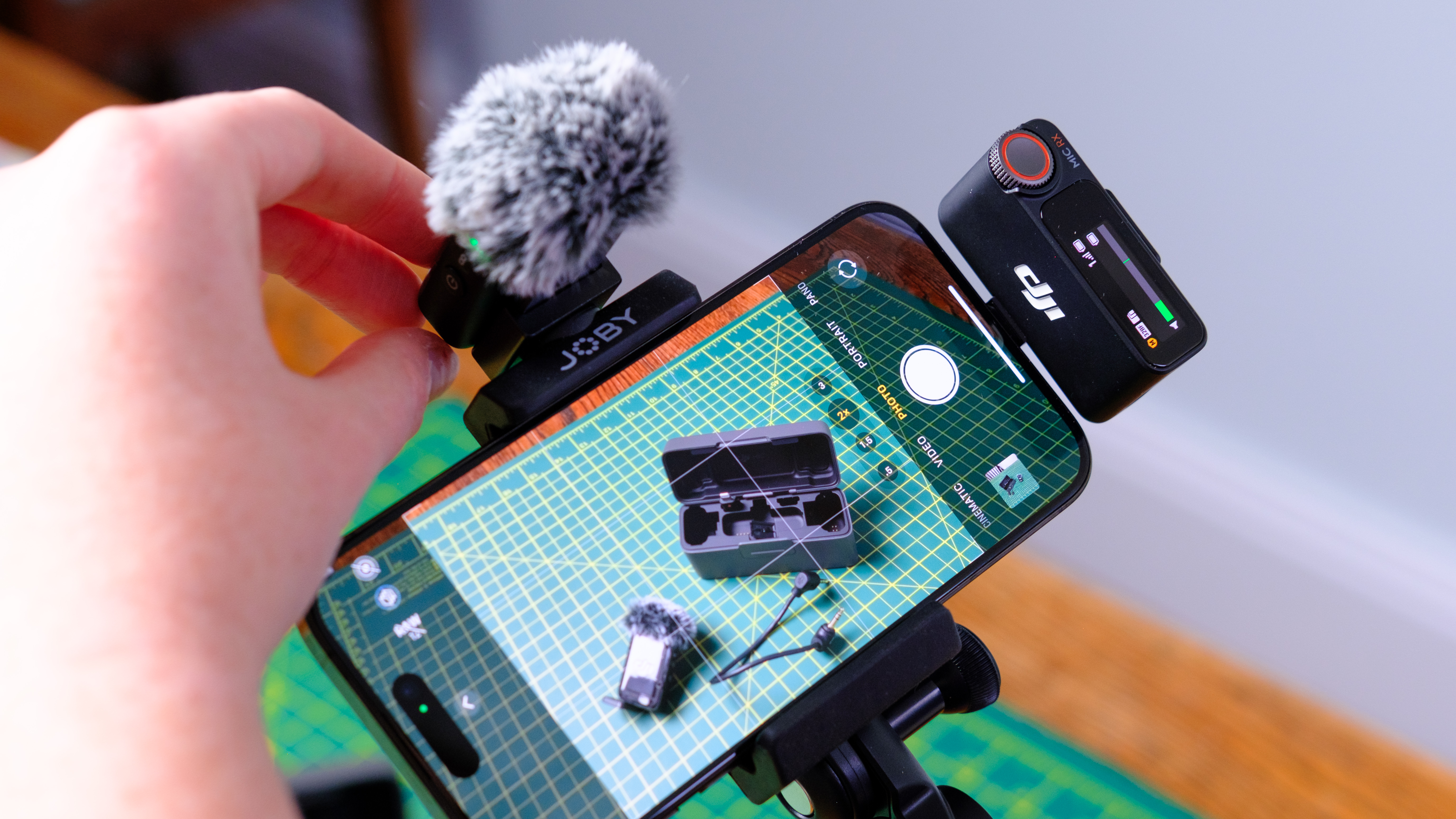
Only two TX units can be connected to the RX at any one time, so if you need to conduct multi-person interviews, the DJI Mic 2 isn’t for you. Unlike the Rode Wireless ME, there’s no microphone built into the receiver to allow it to function as a standalone on-camera frontal mic or a rear-facing interviewer mic. This isn’t a feature on the Rode Wireless Pro or Rode Wireless Go II, either.
The theoretical unobstructed range of the DJI Mic 2 is 820 feet (250m). That’s 30 feet less than the Rode Wireless Pro at 850 feet (260m), although there isn’t much in that gap. Realistically, unless you’re shooting in an open field, the usable range of both will be a lot smaller anyway.
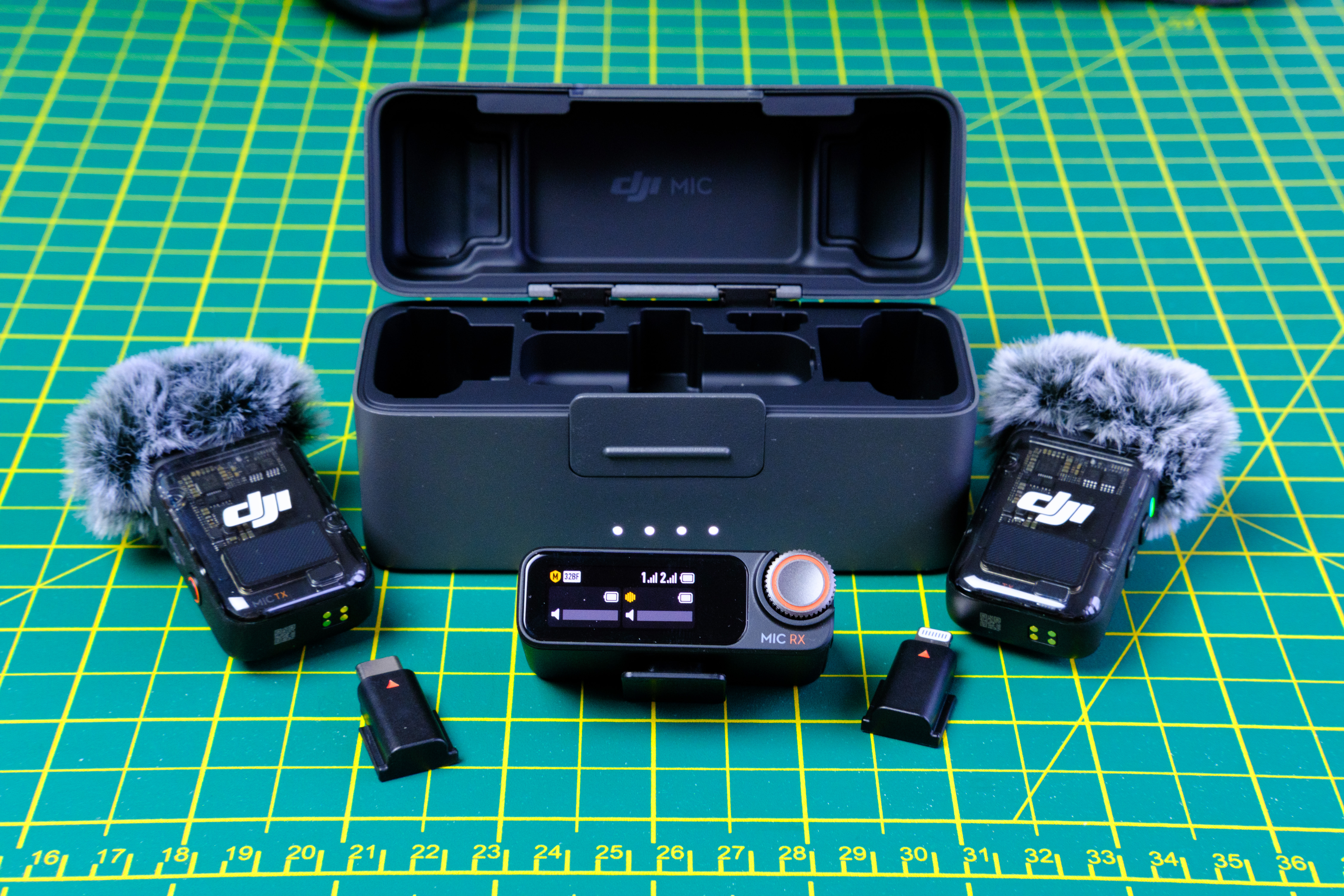
Updating firmware requires hooking the RX and one of the TX units up to a computer and manually dragging and dropping firmware files to the onboard storage of both units. It took a couple of tries for me to get the TX units updated — you need to wait until lights stop flashing a certain way. It’s fairly simple if you're confident, but isn’t the most user friendly way of updating firmware.
Transmitter units feature internal storage, allowing standalone TX recording plus backup recording — the latter means that even if your camera files are lost, or the audio is corrupted, there’s always a backup on the TX itself. With 8GB of storage, 14 hours of internal recording is possible per transmitter. This is significantly less than the 32 hours available with the Rode Wireless Pro, but should still be plenty for most people.
DJI Mic 2 review: Audio quality
Obviously, while additional features are nice to have, what matters most is the audio quality the DJI Mic 2 delivers. In short, it’s great.
The Mic 2’s headline audio feature is its AI noise cancellation, which is specifically designed to clean up conversational audio, filtering complex or busy environmental noise to enhance the sound of vocals. When I first tested the Mic 2 alongside the Osmo Pocket 3, on a windy day by the sea, the AI Noise Cancellation did a great job cleaning the audio of wind buffeting and wave sounds, leaving my vocals clear.
The Mic 2 comes with AI Noise Cancellation enabled out of the box — in both standalone guise and when bundled with the Osmo Pocket 3. If you’re a vlogger or you’re mainly capturing vocal audio, this means the Mic 2 is virtually plug and play. Hook it up, and your vocal audio will be clean as a whistle.
That said, the Mic 2 does a great job of cleaning most audio even without vocals. In another video when testing the Pocket 3, seen below, I was particularly impressed when the microphone cleaned wind and wave noise so well that it picked up the sounds of pigeons cooing behind me.
The videos below demonstrate the difference between internal microphone footage and using the DJI Mic 2 on a windy day. This footage was shot on an Insta360 Ace Pro, with the internal audio captured using the camera’s Wind Reduction filter.
While the Mic 2 delivers great results for vocals and in wind, I was also interested to see how well it would perform in challenging dynamic audio range conditions — that is to say, where there’s a lot of noise going on with a wide range of frequencies.
I took the Mic 2 out on my motorcycle, which is an extremely loud environment with plenty of different frequencies going on: there’s the low frequency exhaust noise, mid-frequency engine and wind buffeting noise and higher frequencies coming from both wind and various mechanical components on the bike.
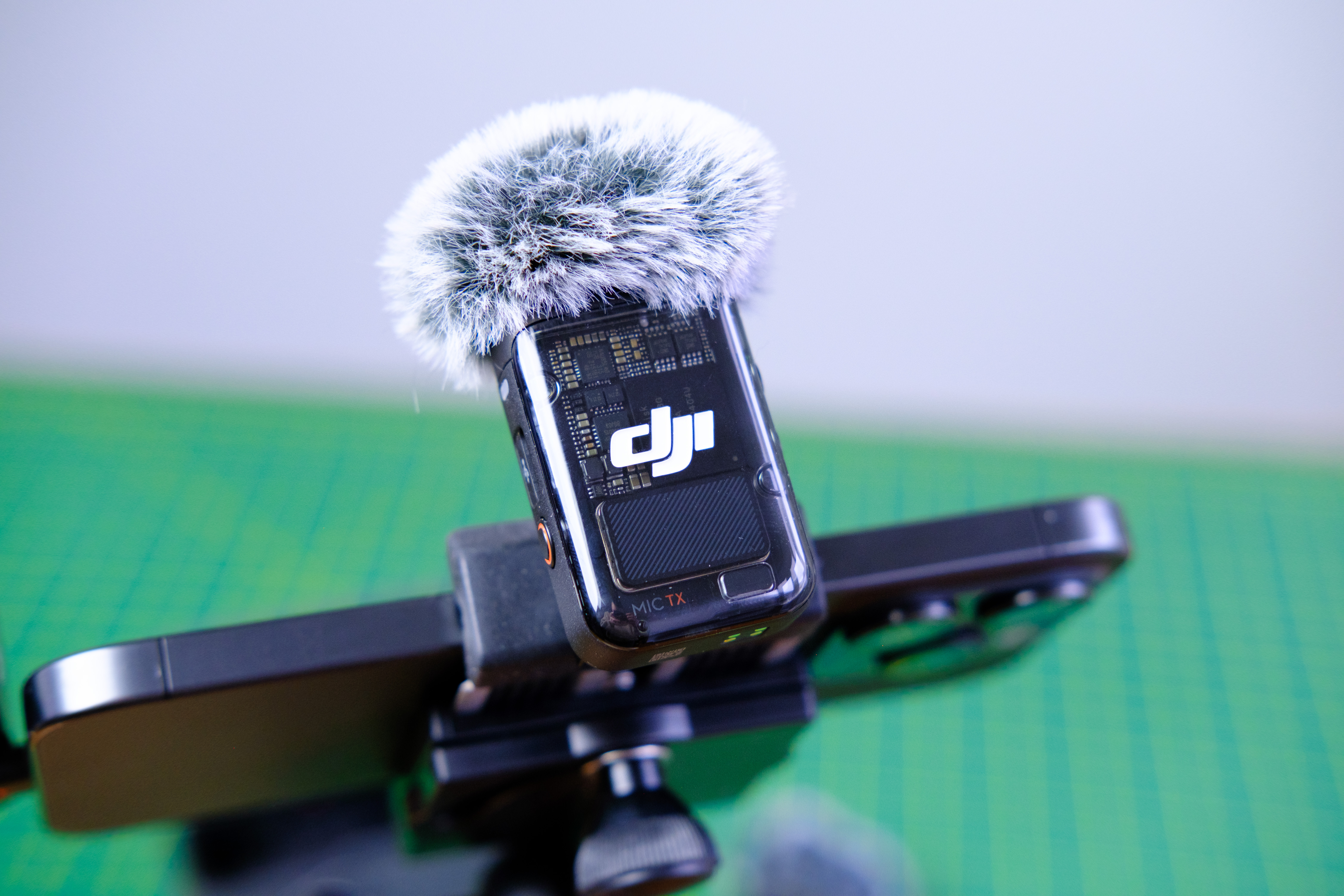
The Mic 2 performed extremely well. As you can see in the video below, low frequency wind buffeting is gone, even at 50-60mph; both the exhaust and engine noise are clean; and most unpleasant sounds are removed save a mid-/high-frequency whistling (could be mechanical or wind noise).
It’s worth noting that it took a bit of fiddling with the Mic 2’s settings to get to that point. Again, that’s because the Mic 2 and its AI noise cancelling are geared toward vocals. While DJI advised me that the noise cancellation should be applicable in other situations, I found that on the motorcycle at least, it would cut lower frequencies to prioritize mid and high frequencies — which wasn’t ideal. I turned noise cancellation off when motorcycling, which garnered the best results.
However, it isn’t all about noise cancellation, as the DJI Mic 2 comes with some other great features if you are looking to record more adventurous audio. Firstly, its AOP (acoustic overload point) — essentially the volume at which audio will start to blow out — is 120dB, which is 6dB higher than the DJI Mic 1, although 3dB lower than the Ride Wireless Pro. Without any negative gain dialled in, this proved to be plenty of headroom for motorcycling, which is a pretty loud hobby. (The exhaust volume alone is over 100dB.) Unless you’re into helicopters, jet aircraft, or find yourself needing to dial in lots of gain in an unpredictable audio environment, you should be fine.
Besides, there’s also a useful Mono (Safety) mode, which records a backup audio track at -6dB gain to help ensure that even if you do clip, you’ve got a safety track stored to rescue the audio. This is very useful to have enabled in noisy or unpredictable environments.
The Mic 2 also features 32-bit Float recording (also available on the Rode Wireless Pro) for a wider dynamic range capture — great for challenging audio conditions while also giving more flexibility in post-production. I had this enabled for my motorcycle footage.
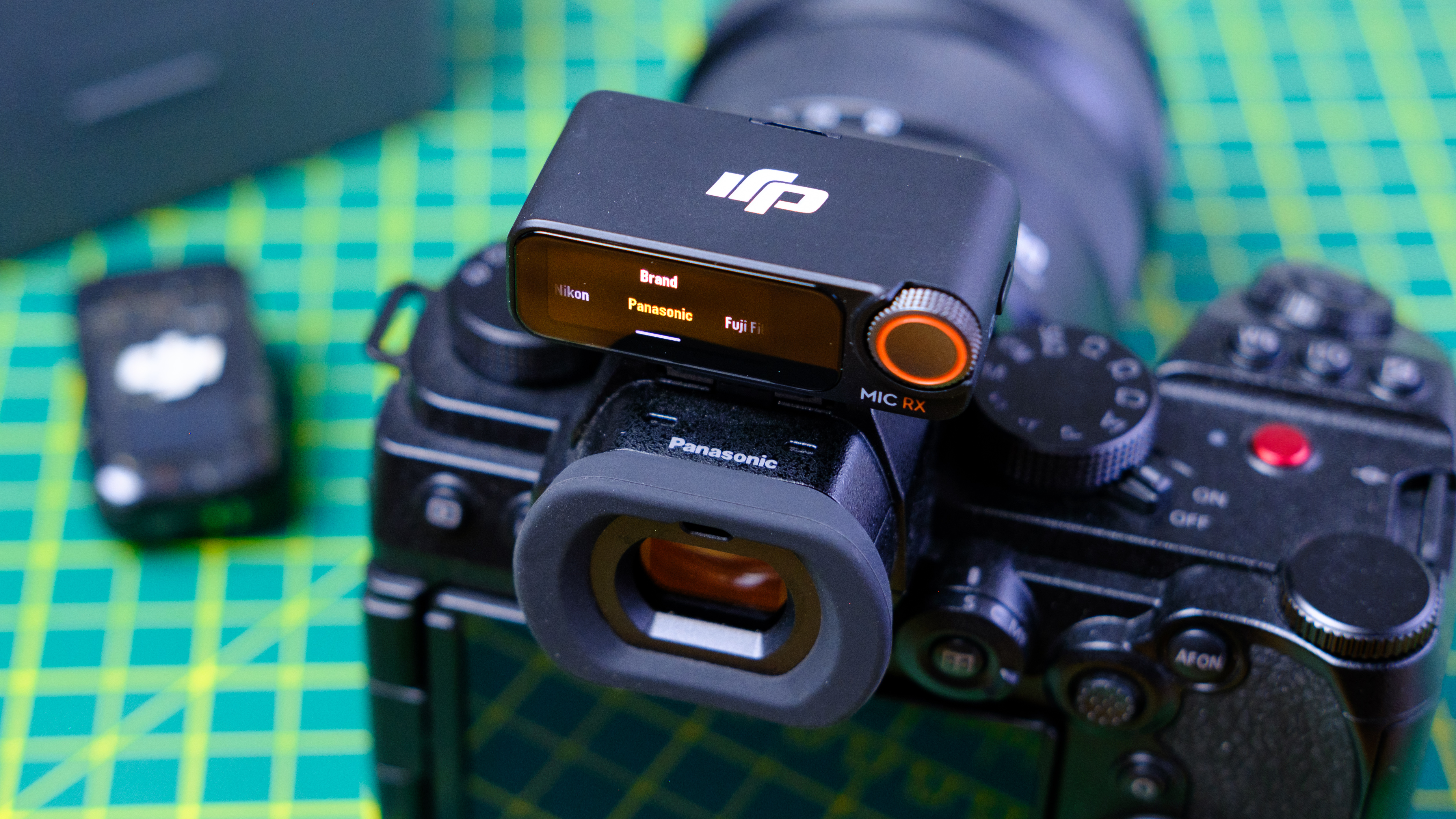
DJI has also built camera audio profiles into the Mic 2’s receiver, which can be switched between in settings to provide the best audio when using various cameras. There are profiles for numerous cameras from the main mirrorless camera manufacturers, but unfortunately DJI has confirmed there won’t be support for action cameras due to them using USB for audio hookup — the profiles are for cameras when using the camera audio cable.
DJI Mic 2 review: Battery life
Each of the DJI Mic 2’s transmitter delivers 6 hours of battery life on its own, which is an hour less than the Rode Wireless Pro, but still decent. The receiver also lasts for 6 hours when hooked up to both transmitters. That’s about half a day of continuous shooting, according to DJI. When shooting motorcycle footage, operating the tiny buttons of a microphone is difficult, but I was more than happy to just keep the transmitter and receiver turned on until I pressed the record button. I never ran out of charge.
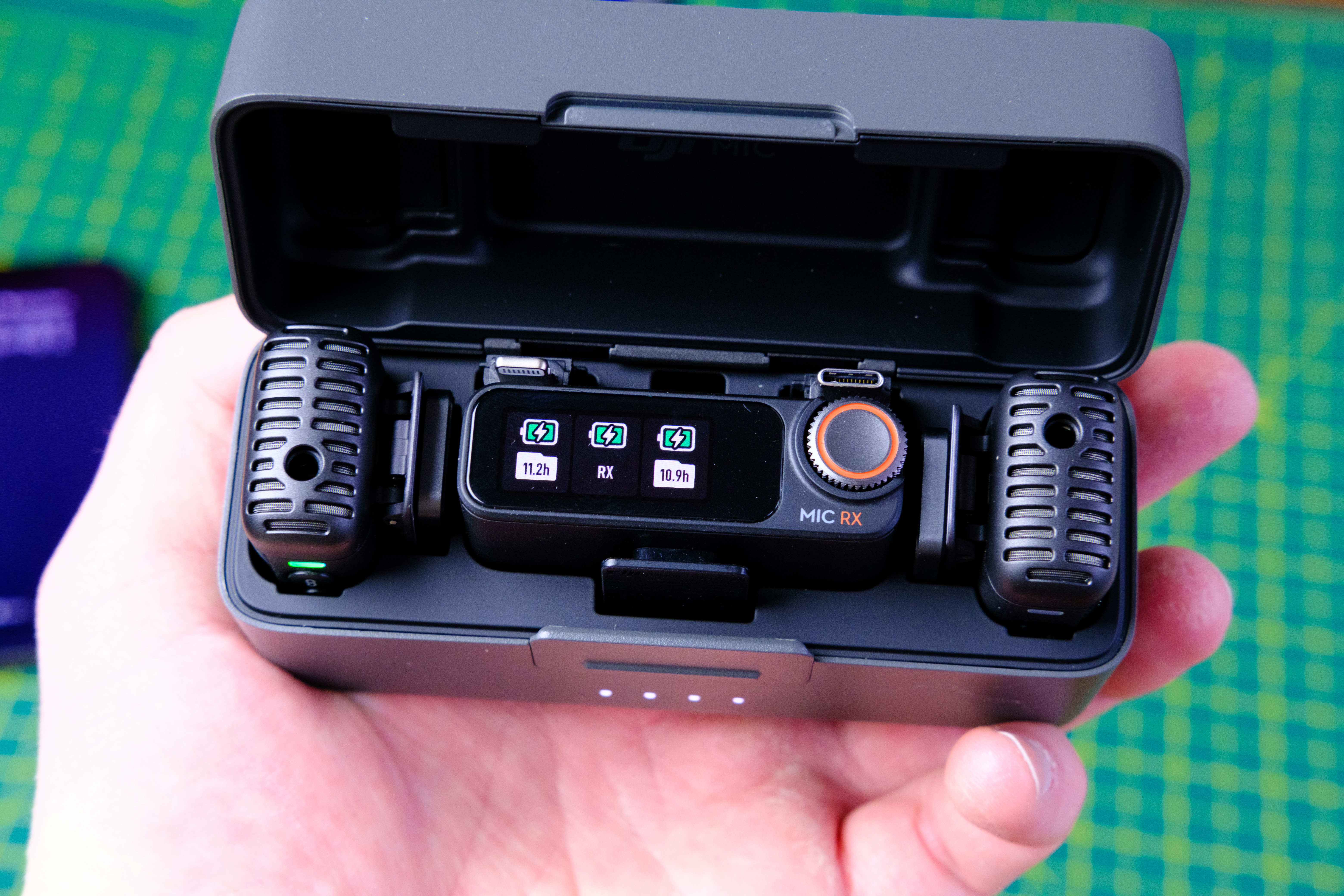
With the charging case, the Mic 2 can achieve up to 18 hours of recording using the full 2TX + RX kit. Bear in mind though, that the transmitters and receiver each take 70 minutes to recharge, which is quite a long time if you’re mid-shoot. The case itself takes 2 hours 40 minutes to recharge, presuming it isn’t also charging the recording units internally at the same time — again, rather slow.
DJI Mic 2 review: Verdict
The DJI Mic 2 is a great wireless microphone kit, especially for vloggers, content creators or interviewing. Out of the box, its AI noise cancellation cleans up challenging audio environments to deliver extremely clean vocals.
The Mic 2 also has a slew of powerful features to suit professionals and more adventurous recording. A 120dB AOP, 32-bit Float recording, a -6dB safety track and internal backup recording provide flexibility and peace of mind for pros whose income depends on their footage. Battery life is also good for a half day shoot, although charge times are a little disappointing.
The Mic 2’s main competitor is the Rode Wireless Pro — which offers similar features and sits in the same price bracket. On paper at least, everything the DJI does, the Rode does slightly better — it features a slightly longer range, a slightly higher AOP, an hour’s extra battery life and admittedly a lot more internal storage.
However, the full Mic 2 kit is also slightly cheaper than the Wireless Pro, diminishing the weight of those minor shortcomings. DJI is also offering the Mic 2 in a modular fashion, which I really like — you can save a lot by simply buying one TX + RX if that’s all you need, while still getting access to the powerful features.
As I repeatedly find myself saying about DJI products these days, the Mic 2 is fantastic.



!["[T]he First and Fifth Amendments Require ICE to Provide Information About the Whereabouts of a Detained Person"](https://images.inkl.com/s3/publisher/cover/212/reason-cover.png?w=600)



